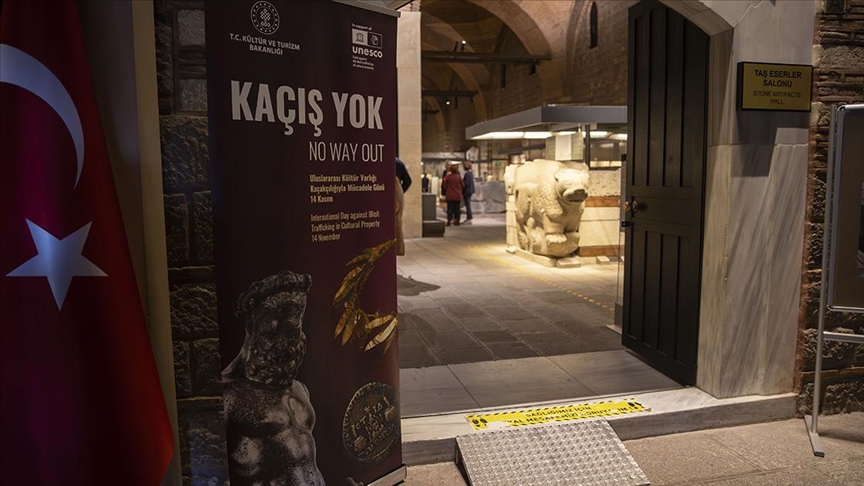International Day against Illicit Trafficking in Cultural Property is an international observance held annually on November 14, drawing attention to the prevention of theft, looting and illegal trade of cultural property. The day highlights the societal impacts of crimes targeting people’s histories, identities and cultural heritage and emphasizes the need for countries and the international community to act in cooperation.
%2FAA-32872382.jpg)
Artifacts Returned to Türkiye (Anadolu Ajansı)
Legal and Institutional Framework
This day was adopted at UNESCO’s 40th General Conference in 2019. November 14 has been officially designated by UNESCO as the International Day against Illicit Trafficking in Cultural Property.【1】 The day is based on the 1970 Convention on the Means of Prohibiting and Preventing the Illicit Import, Export and Transfer of Ownership of Cultural Property (1970 Convention). The 1970 Convention provides an internationally binding framework to prevent the illicit trade of cultural property and to ensure the return of stolen objects. The year 2020 marked the 50th anniversary of the Convention and various events were organized to raise the visibility of its achievements.
Illicit Trafficking of Cultural Property
The main causes of illicit trade in cultural property include ignorance and lack of ethical awareness. This trade occurs worldwide through illegal markets and the internet and sometimes even through legal channels such as auctions. Illicit trafficking contributes to the destruction of cultural heritage, the weakening of social bonds and the financing of organized crime and terrorism. UNESCO carries out activities to ensure strong and coordinated measures against this crime.
International Cooperation and Measures
Within the framework of the 1970 Convention, UNESCO strengthens international cooperation against the illicit trade of cultural property. Member states are encouraged to fulfill their obligations by becoming parties to the Convention. Additionally, the International Code of Ethics for Dealers in Cultural Property is promoted, and the implementation of standards is supported. Procedures are established for the return of stolen or illicitly exported cultural property to their countries of origin and public declarations are made to ensure transparency.
%2FAA-32872381.jpg)
Artifacts Returned to Türkiye (Anadolu Ajansı)
National Practices
In Türkiye, various initiatives are carried out to combat the illicit trade of cultural property. For example, the “No Escape” exhibition at the Ankara Museum of Anatolian Civilizations communicates to the public the significance of the UNESCO 1970 Convention and the processes for the return of cultural property smuggled from Türkiye. The Directorate General of Cultural Heritage and Museums, in coordination with police and gendarmerie units, Regional Conservation Boards, and laboratory experts, ensures the protection and recovery of cultural property.

Museum of Anatolian Civilizations – “No Escape” Exhibition (Anadolu Ajansı)
Awareness and Education
This day aims to promote the protection of cultural heritage and raise awareness. UNESCO involves communities, governments, the art market, and institutions in the process of safeguarding cultural property and raising awareness against illicit trafficking. Additionally, the day is designed as a platform to recognize the work of relevant institutions and to increase the visibility of projects that contribute to the preservation of cultural heritage.


